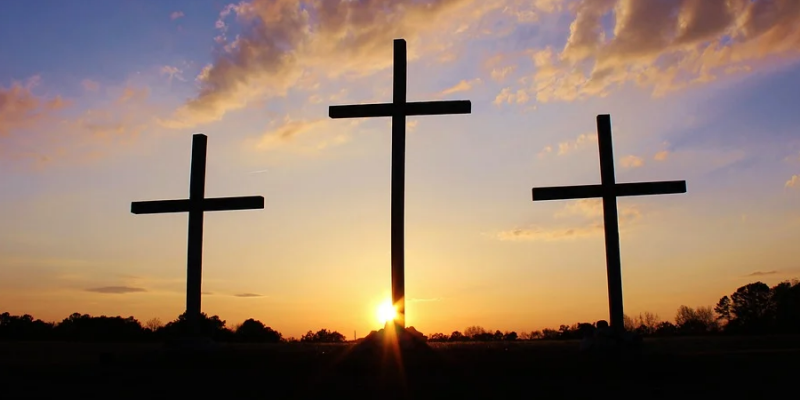Membership to churches, synagogues, mosques, etc., continued to decline last year, dropping below 50% for the first time in Gallup’s 80-year study of religious trends in America.
In its review of 2020 data, 47% of those surveyed said they belonged to a local religious institution — down from 50% in 2018, 70% in 1999, and 73% when Gallup started the poll eight decades ago.
The news did not come as much surprise, as pollsters had been tracking a decline in American religious affiliation since 2001. Pew Research Center issued a sobering headline in 2019 which read “In U.S., Decline of Christianity Continues at Rapid Pace,” denoting where the most change is taking place: Christianity.
Though politically conservative Protestants tended to buck the trend with less of a decline, the drop has been across all major categories, Gallup reported. “Over the past two decades, declines in church membership have been greater among Eastern residents and Democrats. Still, political independents have lower rates of church membership than Democrats do,” Gallup reported.
Self-professed Protestants, Catholics, Orthodox and other groups in the Christian category still account for around 65% of the country according to most measures — but membership (in other words, some level of accountability to and identification with a church) is what has taken a nose-dive.
From the hip: There are plenty of reasons for this trend — and like most matters of religious debate almost no consensus.
It could be that churches are less inclined to push formal membership (some megachurches will consider you a “partner” or some other synonym with very little in the way of preparation) while others may not emphasize joining at all. The rate of “churn,” a term for Christians who hop churches, is anywhere from 10 to 30%, further obscuring who belongs to whom. It could be that a generation or two has being raised to question the role of churches in politics and society (e.g. the incessant drum-beating by liberals of an alleged monolith of support by Evangelicals of Donald Trump). And there’s the much-hyped rise of “the Nones” who have no affiliation at all, and whose influence is growing. And let’s not neglect COVID-19 restrictions and how a year’s worth of memberships are essentially on hold in many places.
Other studies show that a worsening of the economy is associated with a drop in church attendance. Whether one causes the other is up for debate. Maybe it has something to do with trust in authority figures at all levels (from your local mayor to the president and all the way up to God).
Enough speculation for now. For Christians, this is no new concern, but one that goes back to the very origins of the faith.
Advertisement
Consider the first Holy Week. On the first Palm Sunday, a crowd enthusiastically cried “Hosanna!” as Jesus rode upon a donkey during the Triumphal Entry, and as prophesied. Less than a week later, that triumphal jubilation would give way to betrayal (Judas Iscariot), denial (Peter, at least), and flight (scripture records none of the disciples staying to defend their master).
That’s 0%. Jesus was for at least part of Good Friday a shepherd without any sheep.
Yet it didn’t stay at zero. Jesus’s ministry was not finished, even while bleeding, being tortured, and struggling to breathe. There’s the matter of those who witnessed the Crucifixion. A Roman guard was convinced “Surely this man was the son of God.” And a common thief on a cross next to Jesus professed faith, to which the Lord said “Today you will be with me in paradise.”
Though the statistical number of Jesus’s disciples today appears to be at a recent low, his true followers continue to do what Jesus ordered them to do: love God, love others (the two great commandments) and make disciples (the Great Commission). Whether they’re doing those things well is another subject up for debate.
We’ll give the final word to Mark Tooley, President of the conservative Institute on Religion & Democracy (himself a United Methodist greatly concerned with the decline in that particular flock). In the blog “Juicy Ecumenism:”
The past was not always as religious as we imagine. The Second Great Awakening jumpstarted religion in the early 19th century. And, often helped by succeeding revivals, it kept climbing, as the historic Protestant denominations became more established, built great churches, started schools and publishing houses, and came to dominate much of American civic life.
Population growth and urbanization brought more people, previously isolated on the frontier or the countryside, into closer proximity to churches. The Catholic Church also became a growing force in the mid 19th century with waves of immigration from majority Catholic European countries.
Most Protestant historic denominations, having become “mainline,” began their 60-year decline in the early 1960s. Catholicism, although not numerically declining at the same rate, began declining as a share of population in recent years. […]
Christians and churches tempted to barricade themselves within their own silos against cultural adversity can’t successfully evangelize and can’t effectively serve wider society. Across four centuries American churches have nurtured the nation’s democracy and wider civil life by offering transcendent themes that override tribalism and hyper individualism. Democracy and society are now suffering from the churches’ retreat.
Only the churches’s full return to their evangelistic vocation will restore their vitality and renew America’s democracy.
Happy Holy Week from The Hayride.
Advertisement
Advertisement

